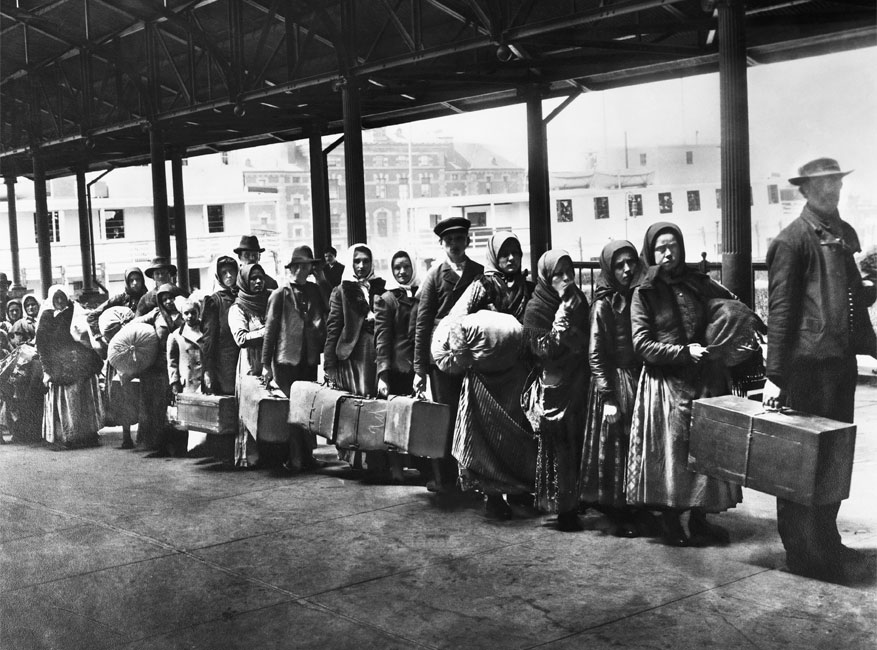The Historical Online Map My Bulgarian history dedicates the summer of the Bulgarians outside the country. Join the campaign by sharing an interesting story about a significant Bulgarian overseas at www.myhistory.bg!

Modern Bulgarian communities, most often called Bulgarians abroad, as well as Bulgarian citizens outside the Republic of Bulgaria, are heterogeneous and represent a varied mosaic of different groups, subgroups and distinct population groups. Because of their heterogeneous composition, their calculation is difficult. According to estimates and unofficial data, the number of Bulgarians (as part of them are Bulgarian citizens) outside the current borders of the country by 2017 amounts to about 2.5-3 million people. The countries with the largest number of Bulgarian citizens are Turkey (about 500 000), the United States (about 300 000), Greece (about 300 000 emigrants), Spain (250 000) and the United Kingdom (about 250 000).
From the point of view of their ethno-cultural, ethnographic, confessional and / or linguistic characteristics, they differ considerably between themselves. Two approaches can be used when defining Bulgarian communities abroad. The first is chronologically and includes splitting them into "old" and "new".
As a starting point, the period of the collapse of Communist rule in the country - 1989 is usually used. Thus, the Bulgarian communities before 1989 are perceived as old, and those that are built after this period - as new ones. Old migration can be divided into three main periods - formed until the rebuilding of the Bulgarian state in 1878, built between 1878 and 1944 and established between 1944 and 1989.
The chronological migration from Bulgaria in the period 1989-2016 has several periods. The first began in 1989. Some growth of non-domestic movements was observed during and after the crisis in the country at the end of 1996 and early 1997 due to inflation and the critical economic situation. The second period occurs in 2001 following the lifting of the visa visa restrictions in the European Union. The start of the third period was set in 2007 when Bulgaria was admitted as a member of the EU, and Bulgarians were given the opportunity to work freely in some of the countries of the Union.
The next wave occurred in the middle of 2010 and was provoked by the economic crisis and market stagnation, which are the basis for an increased movement from Bulgaria as well as the relocation of representatives of the larger Bulgarian emigrant communities such as those from Southern Europe from Spain, Cyprus, Greece and Greece) to Germany and the UK. A new trend is emerging in 2013, where Bulgarian emigrants living in the UK or Germany are reorienting and moving to northern Europe to countries like Sweden, Denmark and Norway, due to oversaturation of the British and German markets with emigrants.
- Autochthonous communities inhabited territories, perceived as part of Bulgarian ethnic territory, which fell within the borders of neighboring countries under international treaties (the Bulgarians in Northern Dobrudja and the Western Balkans (the western outskirts, Gora, Golo Brdo, Vardar, Aegean and Prespa Macedonia, Edirne and Aegean Thrace, Southern Rhodopes).
1.2. The ethnic diaspora is formed by being exiled from the Bulgarian ethnic territory and the Ottoman Empire. The oldest of the Banat Bulgarians, established after the Chiprovsky uprising in 1688, and the most numerous of them - a consequence of the Russian-Turkish wars from the end of the 18th and the beginning of the 19th century (Bessarabian, Taurian, Olsan, Odessa, Nicolaevsky, Crimean Bulgarians, Bulgarians in Romania and Moldova).
1.3. Emigration is formed by emigration from Bulgarian ethnic territory and country for economic and political reasons
1.3.1. Economic emigration from Bulgaria, Macedonia, Bessarabia, Banat and other overseas territories and communities at the end of the nineteenth century and the first decades of the twentieth century formed the bulk of our emigration in Central Europe, North and South America, and Australia. This includes emigration from Bulgaria after 1989 towards Central and Western Europe, USA, Canada and Australia.
1.3.2. Political emigration from Bulgaria after 1878. It is related to the movement of Muslim Bulgarians, who, due to political persecution, baptism and renaming, leave their native places and settle first in the Ottoman Empire, then in Turkey. This includes the Communist movements as a result of the 1923 coup, emigrating mainly in the Soviet Union, and settlers in Western Europe and America. After 1944, some of the participants or sympathizers of the previous government, the monarchy, or students who do not return to their country after completing their education, are building Bulgarian political emigration in the United States, Australia, Western Europe and Latin America.
According to Milanov, the political emigration from the territories outside Bulgaria, and in particular from Macedonia, Thrace, Asia Minor and Bessarabia, which sought survival after the 1903 Uprising of Ilinden and Preobrazhenie and the Tatarbunar Uprising in Bessarabia in 1924 , as well as after the two Balkan world wars.
- The communities of the ethnic non-Bulgarian groups in Bulgaria are also formed as a result of external migration and mainly for political reasons such as the Bulgarian Jews in Israel and the Bulgarian Turks in Turkey (among them there are a large number of Gypsies and Tatars). The relations of these communities with Bulgaria are determined by the degree of their previous integration in Bulgarian society. According to E. Milanov (2000) they should be defined as "Bulgarian cultural communities" because of their relationship with the "Bulgarian modern public culture". Nevertheless, it must be borne in mind that a large part of the Turks started to leave the Bulgarian lands after the rebuilding of the Bulgarian state in 1878, as it is a massive and gradually evolving migration, provoked by political persecutions lasting more than a century. The number of those who have left is difficult to determine, because economic movements in this direction are already underway.
by Assoc. Prof. Dr. Mila Maeva, Thanks!